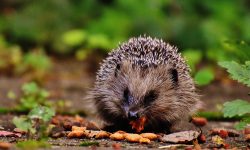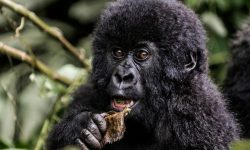Polar bears are powerful Arctic predators uniquely adapted to survive some of the harshest conditions on Earth. Their diet is tightly shaped by extreme weather, shifting ice conditions, and seasonal food availability. Despite living in an icy world with limited vegetation, polar bears thrive thanks to specialized hunting techniques and high-fat prey.
In the wild, these massive carnivores rely heavily on marine mammals, especially seals, which provide dense calories and insulation-building blubber. When opportunities arise, they also scavenge, forage, and adapt their diet depending on the season and region. Their incredible sense of smell and patient hunting style make them apex hunters even in frozen landscapes.
Understanding what polar bears eat reveals not only their biology but also their role as top predators in the Arctic. Below is the most detailed, ad-friendly, SEO-optimized breakdown of the 20 wild foods polar bears rely on most.
Understanding the Polar Bear Diet

Polar bears are hypercarnivores, meaning the majority of their nutrition comes from meat—primarily from marine mammals. Their digestive system is optimized for absorbing fat, which is essential for survival in freezing temperatures. Blubber provides the long-lasting energy needed for long walks across ice floes, swimming between habitats, and maintaining body heat.
While seals remain their primary food source, polar bears are opportunistic hunters and scavengers. They consume fish, birds, carrion, eggs, and occasionally vegetation when food is scarce. Because climate patterns influence sea ice levels, their diet can shift dramatically depending on how easily they can access their hunting grounds.
Polar bears obtain almost all their hydration from fat-rich prey, reducing the need to drink water. This adaptation is crucial in the Arctic, where freshwater is often frozen. Their feeding behavior, coupled with seasonal fasting periods, makes their dietary choices vital for long-term survival.
20 Wild Foods Polar Bears Hunt Most
1. Ringed Seals
Ringed seals are the number one food source for polar bears. Their thick blubber layer provides high-fat energy that helps the bears maintain body heat during long Arctic winters.
Polar bears commonly stalk seals at breathing holes or on ice edges, using stealth and patience to strike at the perfect moment. Mothers with pups are especially valued due to their higher fat content.
This reliable prey fuels the energy demands of hunting, roaming, and surviving the harsh climate.
2. Bearded Seals
Bearded seals offer even more blubber than ringed seals, making them a calorie-rich target for adult polar bears.
These seals are large and powerful, so polar bears often attack younger or weaker individuals. Successful hunts typically occur when seals rest on ice floes.
The dense fat layer from bearded seals supports bears through long fasting periods when the sea ice breaks.
3. Harp Seals
Harp seals are a seasonal food source that polar bears take advantage of during migrations.
Younger harp seals are easier to catch, especially when they are learning to swim. Polar bears patrol ice edges during peak harp seal movement to increase hunting success.
This prey helps polar bears build fat reserves before summer melting begins.
4. Hooded Seals
Hooded seals, though harder to catch, provide extremely rich blubber that sustains polar bears for days.
They are fast swimmers, so successful hunts rely on surprise and strength. Polar bears often ambush them as they rest on the ice surface.
These seals contribute essential calories during periods of intense cold.
5. Walrus Calves
Polar bears occasionally prey on walrus calves when opportunities allow. Calves provide huge quantities of fat and protein.
Walrus mothers are fierce defenders, so polar bears usually target isolated calves near ice edges. This high-risk prey can yield enough food for weeks.
In regions with declining ice, encounters between polar bears and walruses are becoming more common.
6. Beluga Whale Carcasses
Beluga whale carcasses washed onto shore provide large, energy-rich meals.
Polar bears feed on the blubber first, scraping off thick layers of fat to fuel long journeys. Carcasses can attract multiple bears that share the resource.
These meals help sustain populations during late-summer food shortages.
7. Bowhead Whale Carcasses
Bowhead whale remains offer enormous amounts of food, especially during migration seasons.
Polar bears find these carcasses using their powerful sense of smell, sometimes from miles away. Once located, the blubber can feed many bears at once.
Carcass feeding reduces competition and provides critical nutrients before winter.
8. Narwhal Carcasses
Narwhal carcasses serve as seasonal feasts in areas where Inuit hunts leave remains behind.
Polar bears consume the thick skin, fat, and tender muscle tissue. Narwhal meat helps maintain body mass during warmer months when seal hunting is harder.
These scavenged meals are essential for bears living near human settlements.
9. Arctic Char
When near coastal waters or river mouths, polar bears may catch Arctic char.
They rely on quick swipes of their paws to stun fish or grab them from shallow water. This behavior is most common among younger bears.
Though less calorie-dense than blubber, fish provides protein and hydration.
10. Salmon
Some polar bears catch salmon during seasonal runs, especially in western Alaska.
Bears wait near riverbanks where salmon are slowed by shallow water. While not a main food source, salmon offers supplemental nutrition.
This opportunistic feeding demonstrates their adaptability.
11. Seabird Eggs
During nesting season, polar bears raid bird colonies for nutrient-rich eggs.
They crack open large clusters of eggs at once, consuming yolks quickly to maximize energy intake. This behavior is most common on coastal islands.
Eggs provide protein and fats that help support summer activity.
12. Seabirds
Polar bears may also prey on adult seabirds such as murres, ducks, and gulls.
They catch them near water edges or on cliff bases where birds nest in large numbers. Birds offer fast but low-fat meals.
This feeding style is especially popular among younger, inexperienced bears.
13. Arctic Foxes
When food is scarce, polar bears may hunt Arctic foxes.
These small mammals provide lean meat, though not enough fat to sustain large bears long-term. Still, foxes are easy to catch in open terrain.
This predation usually occurs during years of poor ice coverage.
14. Lemmings
Lemmings are another supplemental prey item. Though tiny, they provide protein and hydration.
Polar bears catch them when traveling across tundra or scavenging near fox dens. Lemmings help maintain energy between larger meals.
They also introduce dietary variety during warm months.
15. Crustaceans
In shallow tidal zones, polar bears may dig for crabs or other crustaceans.
While not calorie-rich, these prey items are easy to collect during low tide. Crustaceans add minerals and moisture to the polar bear diet.
This behavior is more common among coastal bears with limited access to seals.
16. Mussels
Some polar bears turn over rocks or dig into sand to reach mussel beds.
Mussels provide hydration and modest protein, especially during summer months. They are eaten whole and swallowed quickly.
This opportunistic feeding helps bridge nutritional gaps.
17. Kelp
Kelp is a rare but observed part of the polar bear diet.
Although not nutritious, kelp helps with digestion and provides hydration. Bears may consume it after storms wash seaweed ashore.
This plant-based feeding is considered supplemental rather than primary.
18. Berries
During late summer, polar bears may forage for crowberries, blueberries, and bearberries.
These fruits offer antioxidants and small amounts of sugar. Bears often eat berries while waiting for sea ice to return.
Though low-calorie, berries contribute to a more diverse seasonal diet.
19. Human Garbage (Unfortunate Cases)
In some areas, polar bears consume human waste or garbage due to habitat loss.
This behavior is dangerous and often leads to human–bear conflict. Bears may eat discarded fish, meat scraps, or packaged food.
Conservation efforts aim to reduce these interactions.
20. Other Polar Bears (Rare Cannibalism)
Cannibalism, though rare, occurs during extreme food shortages.
Adult males may prey on cubs or weakened bears, seeking high-fat nourishment. This desperate behavior is linked to rapid ice loss.
Cannibalism underscores the severity of environmental stress in the Arctic.
FAQs
Do polar bears eat only meat?
Yes. Polar bears are hypercarnivores, and although they occasionally eat plants or berries, their diet is more than 90% meat.
How much food does a polar bear need each day?
An adult may eat 4.5–9 kg of fat daily during peak feeding seasons to build reserves.
Why do polar bears rely so much on seals?
Seal blubber provides dense calories and hydration—essential for life in extreme cold.
Do polar bears eat penguins?
No. Penguins live in Antarctica, while polar bears live in the Arctic. Their habitats never overlap.
What do baby polar bears eat?
Cubs rely solely on their mother’s rich milk for several months before tasting meat.
Do polar bears eat fish often?
Fish are occasional, opportunistic meals—far less important than seals.
How far can a polar bear travel for food?
Some bears walk over 1,000 km following sea ice and prey migrations.
Do polar bears hunt on land?
Primarily they hunt on ice, but during summer they may forage on land for eggs, birds, or berries.
Final Thoughts
Polar bears depend heavily on high-fat marine mammals, especially seals, to survive the Arctic’s unforgiving environment. Their adaptability allows them to take advantage of diverse food sources during seasonal shortages, but their future remains tied to stable sea ice. Understanding what polar bears eat helps highlight both their ecological importance and the challenges they face in a rapidly changing world.






